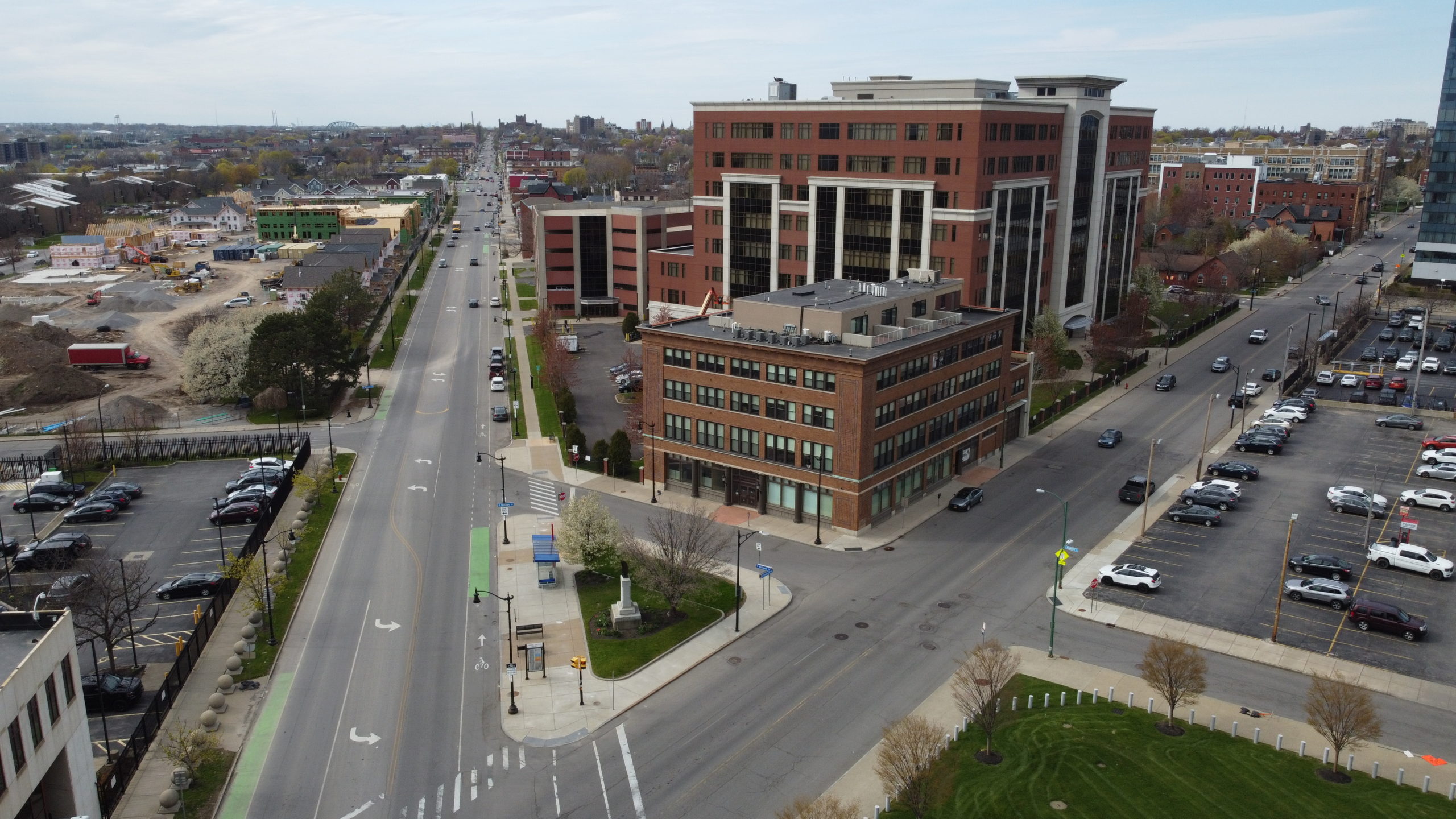Cindy Wood is GObike’s Complete Streets Planner. With the organization since 2018, she started off as a mechanic at our community workshop, then expanded her scope by leading planning and education efforts in Niagara Falls. Cindy officially became a planner for our team in 2022.
So what exactly are Complete Streets?
“Complete Streets is an approach that integrates people and place in the planning, design, construction, operation, and maintenance of our transportation networks. This approach is intended to benefit all users equitably, particularly vulnerable users and the most underinvested and underserved communities. Complete Streets are built on the premise that transportation choices should be safe, convenient, reliable, affordable, accessible, and timely regardless of race, ethnicity, religion, income, gender identity, immigration status, age, ability, languages spoken, or level of access to a personal vehicle.” – completestreets.org
Whether you’re a long-time supporter of GObike or you’ve just recently discovered us, there’s a very good chance you’ve heard us use the term ‘Complete Streets’ at some point. At GObike, we strongly advocate for Complete Streets and firmly believe streets should be designed to make it easier for people to bike to work, cross the street, take public transit, or just simply interact with the street in general. Our main goal is to make the streets in our community safer, more accessible, and designed with safe + equitable access in mind.

What does a Complete Street look like?
Elements that Complete Streets encompass include all things that provide benefits to both street users and its surrounding community. Some examples of elements include wide ADA compliant sidewalks, narrow travel lanes, bike lanes, curb extensions at intersections, crosswalks with reduced travel distances, transit stops, benches, and improved landscaping (ie. added trees or rain gardens).
So if there are Complete Streets, is there such a thing as Incomplete Streets?
Absolutely! Have you ever felt unsafe or uncomfortable while walking on a sidewalk next to a boulevard with several wide travel lanes and a higher speed limit? Or riding your bike within a very narrow shoulder with cars buzzing past you with little-to-no awareness that you’re even there? Take it from me – it’s never a fun experience to travel down streets like those by bike or by foot.
Incomplete Streets are streets that don’t consider the needs of street users that are not traveling in a vehicle during the design process. These streets are typically designed to move cars from point A to point B as quickly as possible. As a result, it negates the consideration of non-motorists in the design process and creates a highly unsafe environment for anyone to use, including cars.

What are some benefits of transforming streets with a Complete Streets approach?
- They provide solutions for improving equity, safety, and public health, especially for vulnerable street users like children, people with disabilities, older adults, and people who cannot afford a car
- They reduce the number of crashes that occur, ultimately making it safer for every mode of transportation to use, even cars
- They provide the building blocks to create a sense of place, which gives more opportunities for communities to live in a healthy, prosperous, and safe environment
- They support local small businesses, as well as other economic + community development projects
How can we get more of our streets to follow a Complete Streets approach?
Talk to your local leaders and emphasize the importance of the safety of the streets in your community! Check with your town or city and see if they have adopted a Complete Streets policy. Be a community advocate for Complete Streets! Tell them that safe streets are important to you, and the first step to making streets safer is by implementing a street design that prioritizes all modes of transportation, not just cars.
You can review the legislation currently being debated and voted upon in Albany surrounding Complete Streets under the Crash Victims Rights and Safety Act umbrella of bills. That’s at www.transalt.org/cvrsa